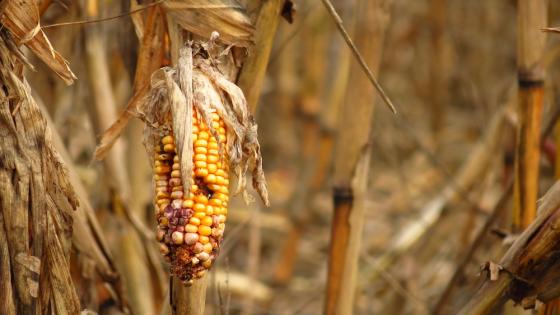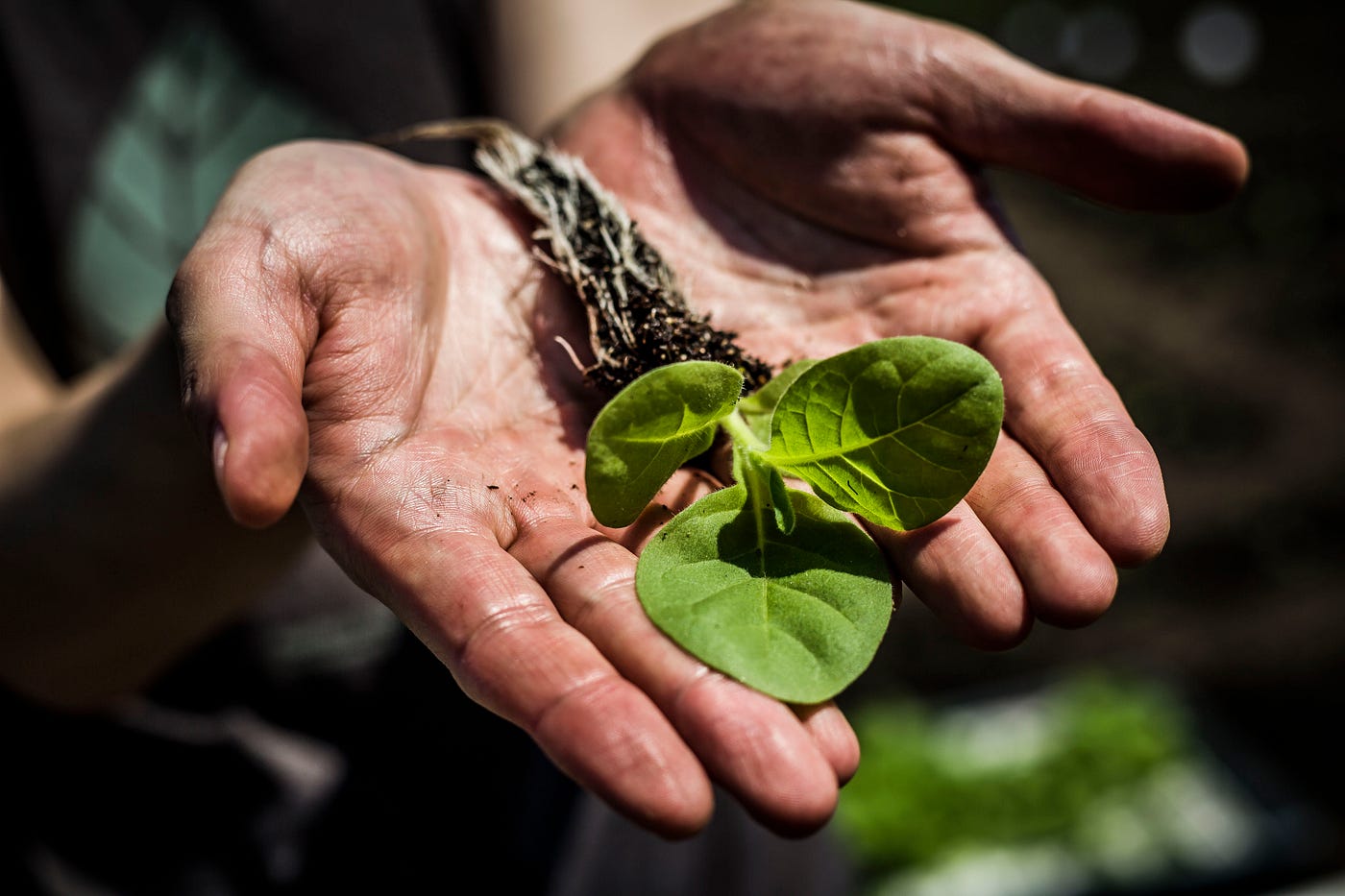Global Food Supply At Risk As Climate Change Triggers Havoc Worldwide, India’s Rice Export Ban Leads to Panic Buying of White Rice by Indians in the US
Global food supply sees a new threat as scorching temperatures and extreme weather conditions worldwide have triggered crop failures, reduced fruit production, and diminished dairy output, worsening food security and price concerns. Recent developments, such as India's ban on rice exports and Russia's exit from a grain deal with Ukraine, have added to the uncertainties. The situation is further complicated by the arrival of the El Niño weather pattern, which could cause additional damage to agriculture.

Global Food Supply Triggered By Climate Change
The impact of scorching temperatures is being felt across continents. Southern Europe is witnessing record heat, resulting in lower milk production and ruined tomato crops.
Droughts have severely affected grain harvests, while China’s rice fields are at risk. In the US, crop conditions in June were the worst in over three decades, and rice prices in Asia have surged to a two-year high due to increased imports.
Southern Europe’s fruit and vegetable crops have suffered significant damage, with tomatoes showing signs of blossom end rot due to calcium deficiency. Italy alone expects agricultural losses exceeding €6 billion ($6.7 billion).
Though the grains market remains well supplied thanks to record soy and corn harvests in Brazil, uncertainties persist. Wheat prices have fluctuated due to news from the Black Sea region, and India’s ban on non-basmati white rice exports is likely to further impact rice prices.
Countries like Thailand and China are facing challenges as well. Drought risks in Thailand have led to a call for limiting rice planting, and high temperatures in China are expected to reduce crop yields.
In the US, unfavourable weather conditions are forecasted to hit the Midwest during critical developmental stages for corn and soybean crops. Transportation issues due to falling water levels in rivers like the Mississippi and Ohio also threaten food security.
The combination of these factors, alongside others not mentioned, has food experts warning of potential increases in global food prices following a year of decline. The situation is deeply concerning, especially as the effects of inflation continue to impact supermarket shelves, further straining access to essential food items.

India’s Rice Export Ban Sparks Global Price Surge and Panic Buying Among NRIs
India’s recent ban on the export of non-basmati white rice has triggered a surge in rice prices in global markets, causing panic buying among Indian expatriates living in the US, Canada, and other countries. As the ban catches many NRIs off guard, they rush to grocery stores and retail chains to stock up on their favourite rice varieties, leading to shortages and price spikes.
Srikrishna, an NRI living in St. Louis, Missouri, recalls how he had to purchase expensive organic rice for dosa, as Indian white rice now costs nearly double the price. While some NRIs like the Vengilla family have switched to alternative grains, many others remain devoted to specific rice varieties, such as Sona Masuri, which are now hard to come by due to the export ban.
Thousands of Indian expatriates, particularly from South India, flock to stores in a frenzy of panic buying, worried about the availability of their preferred rice varieties. The ban has caused immense concern among NRIs, who rely heavily on high-priced white rice that can cost over $600 per tonne.
Calls have been made for the Indian government to consider reclassifying specialized rice varieties under a different Harmonized System of Nomenclature (HSN) code, allowing their export to cater to the overseas Indian population.
Some NRIs express frustration at the panic buying behaviour and call for responsible consumption. However, the fear of rice shortages persists, leading many to secure enough rice to last until the ban is lifted, even though it is believed to be a temporary measure aimed at curbing foodgrain price inflation and promoting Kharif paddy sowing.

The ban’s impact on global markets is evident, with rice prices soaring in foreign countries. The North American market, including the US and Canada, relied heavily on Indian rice imports, with substantial quantities being shipped to Gulf countries and Europe as well. With the ban in effect, rice prices abroad have skyrocketed, causing concern among NRIs who already face challenges in finding authentic Indian rice in some places.
Climate Change, A Catalyst for Food Supply Problems
Climate change is an ongoing global challenge that has far-reaching impacts on various aspects of our planet, including agriculture and food supply. As the Earth’s climate continues to warm, it disrupts weather patterns, alters growing conditions, and affects ecosystems, leading to an array of challenges in food production, distribution, and availability.
Crop Failures and Changing Growing Conditions
One of climate change’s most immediate and evident effects on food supply is the increased frequency and intensity of extreme weather events. Heatwaves, droughts, floods, and storms are becoming more frequent and severe, wreaking havoc on agricultural productivity.
Crop failures have become a recurrent problem as plants struggle to survive under erratic weather patterns, and extreme temperatures exacerbate water scarcity. Such disruptions to traditional growing seasons and habitats are making it challenging for farmers to predict and manage their crop yields effectively.
Declining Crop Yields and Nutritional Quality
Rising temperatures and changing precipitation patterns also impact the quantity and quality of agricultural output. High temperatures can reduce photosynthesis and negatively affect the development of certain crops, leading to lower yields.
Moreover, increasing carbon dioxide levels in the atmosphere can cause some crops, like rice, to have reduced nutrient content, particularly essential micronutrients like iron and zinc. This, in turn, threatens the nutritional value of diets dependent on these staple crops, potentially leading to nutritional deficiencies.

Water Scarcity and Irrigation Challenges
Climate change is altering hydrological cycles, affecting the availability and distribution of water resources. Regions that were once agriculturally productive are now facing water scarcity, limiting the scope for irrigation and water-intensive farming practices.
As water sources shrink or become unreliable, farmers struggle to cultivate their lands, reducing agricultural output and food shortages in affected areas.
Loss of Biodiversity and Disruption of Ecosystem Services
Climate change is also disrupting ecosystems, leading to the extinction or migration of plant and animal species. Biodiversity loss can have a cascading effect on food supply as it affects pollination, pest control, and soil fertility.
For instance, declines in bee populations impact the pollination of many crops, reducing yields. Similarly, disruptions to natural pest control mechanisms can increase reliance on pesticides, affecting the environment and food safety.
Impact on Oceans
Climate change also extends its reach to the oceans, impacting marine ecosystems and fish stocks. Warming ocean temperatures, ocean acidification, and sea-level rise can lead to changes in fish migration patterns, altered breeding seasons, and habitat destruction. Therefore, coastal communities that are heavily reliant on fish as a primary food source or income may face significant challenges in maintaining their livelihoods.
Climate change is undeniably triggering food supply problems, affecting both the quantity and quality of our food resources. The consequences of these disruptions extend beyond agricultural productivity, impacting global food security, nutrition, and livelihoods.
The Last Bit, India’s ban on non-basmati white rice exports has led to significant disruptions in global rice markets, triggering a surge in prices and panic buying among NRIs, especially those from South India.
While the ban is seen as a measure to control food grain price inflation and support agricultural activities domestically, it has resulted in shortages and increased costs for rice consumers worldwide.
The impact of extreme weather events on agriculture and food supplies emphasizes the urgent need for proactive measures to address climate change and ensure long-term food security for the global population.




